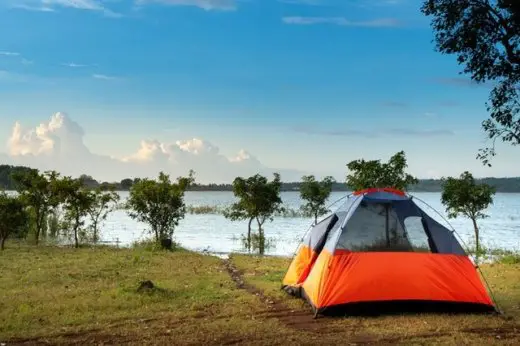
Camping is a fun activity that many outdoor enthusiasts love, and it attracts nature lovers and environmentally conscious people alike. Camping may be more of an environmental hazard than you thought, though.
We are going to go over some of the negative impacts that your camping trip might have on the environment and then discuss some ways that you can make your camping trip more eco-friendly.
How to Be an Environmentally Conscious Camper
Leave No Trace
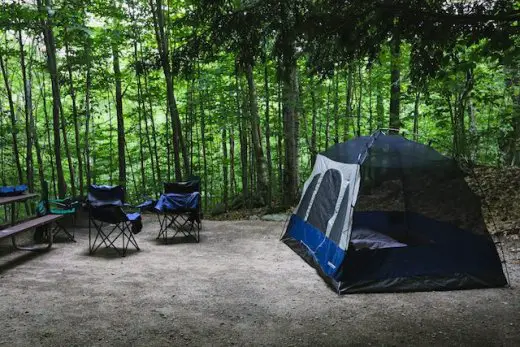
The concept of leave no trace should shape your environmentally conscious camping philosophy. While it is very important to clean up your campsite and leave with everything you brought, leaving no trace includes a lot more than just cleaning up after yourself.
It also means planning things out and making conscious decisions when it comes to where to camp, how to set up, what you do while camping, and even the gear that you choose to bring with you.
Take What You Bring
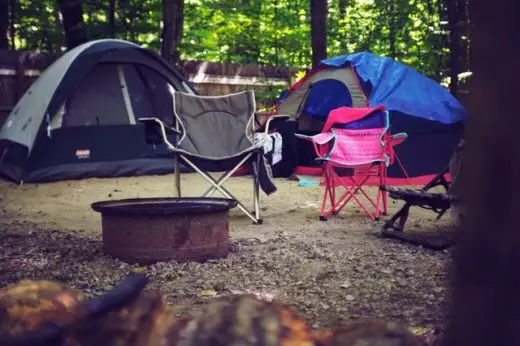
This one is a no brainer, but some nuances need to be discussed.
The concept is exactly like it sounds. If you bring it to your campsite, make sure you also take it out of your campsite.
Some people think there are exceptions to this rule. Biodegradable trash is one example. It’s just going to biodegrade into the dirt, so why not leave it in the bushes? It turns into fertilizer, so it’s actually good for the campsite, right?
Not necessarily. Some organic material actually takes a long time to biodegrade. Citrus fruits such as oranges are a prime example. Even if your organic biodegradable trash doesn’t take a long time to turn into compost, it may still be harmful to the local wildlife.
Natural ecosystems rely on a delicate balance to thrive and survive. When you leave food scraps behind, you may be feeding a member of the ecosystem and giving it an unfair advantage over the rest of its competitors. This can throw the ecosystem out of balance and be bad for some of the key species that keep the area thriving.
Use Established Campgrounds

You may be tempted to go camping off the beaten trail, and that’s ok sometimes if you are aware of your environmental impact and are careful not to disturb the local ecosystem too much.
Most of the time, however, it is better to use an established campground. These campgrounds have been designed for public use and are managed by professionals to reduce the environmental impact that we have on the local ecology.
An established campground will often have trash receptacles for you to use, so you don’t even have to worry about managing your garbage. There are often other amenities that will make your camping experience more comfortable such as bathrooms and showers.
These campgrounds are also in places that are designated for human traffic and where the local ecosystem has already adapted to our presence. There will be guidelines in place that will help you be aware of the things you may not have considered that will hurt the environment.
Follow the Rules
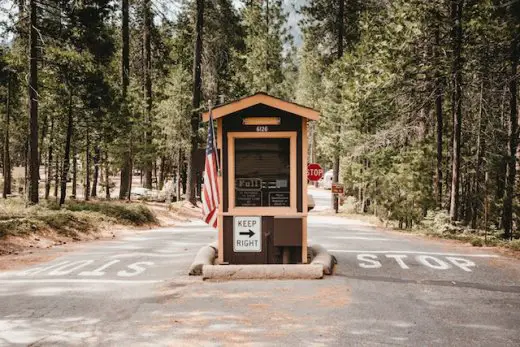
When you are out camping you should always follow the rules for your campsite. They are there for a reason. This may trigger your inner rebel a little bit, but hopefully, your love of nature is stronger than your desire to break the rules.
You may not fully understand why a rule is put in place, but that does not mean that you should break it. The rules at your campsite were developed by educated and trained professionals that have much more understanding and awareness as to how the local environment reacts to different things.
The rules for the location you’re camping in can often be found on a sign near the trailhead. If you don’t see one, check online for a digital version of the location’s rules. If you don’t see that either, just use common sense and do everything you can to leave the wilderness the way you found it.
Buy Eco-Friendly Gear
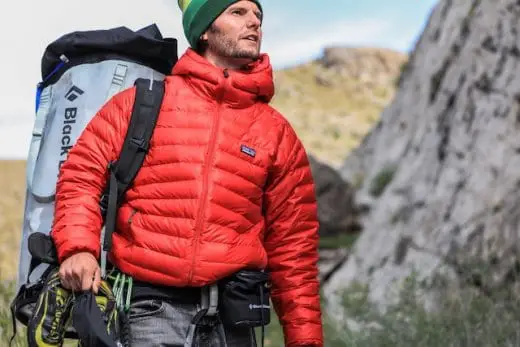
Buying eco-friendly gear is a great way to reduce your impact on the environment.
There are many different options, and you can go about this in several ways. It is hard to know which option is the most environmentally friendly because there are often hidden costs to things that we are not able to be aware of.
When you are buying your outdoor camping gear, look to buy equipment that is built to last a long time. It may be more environmentally friendly to buy one piece of equipment made with environmentally unfriendly materials than to have to buy several pieces of equipment that are made in an environmentally friendly way.
You can also look for equipment that is made of natural biodegradable materials, or that is made of recycled materials. Both types of equipment avoid the production of new plastics, which is great for the environment.
Get to Know Your Gear Supplier’s Environmental Practices

Opt to buy from companies that focus on manufacturing their outdoor equipment using eco-friendly and sustainable practices.
With the rise in concern over the effect that we are having on the environment, many companies are going green and creating eco-friendly sustainable products.
Unfortunately, some of these companies want to create the image that they are eco-friendly but still use environmentally unsound practices.
It is important to watch out for these companies. To them, their bottom line is more important than saving the planet, and they’re willing to lie to make more money. It is good to be aware of a company’s environmental position.
It’s a good start to know that a company at least says that they want to help the planet. Don’t just take their word for it, however. Do your research to make sure that the company in question is actually living up to their claims.
Use Biodegradable Soap and Toiletries

Soap, toothpaste, and other toiletries can have a negative impact on your campsite’s local environment.
The chemicals in your shampoo, soap, or toothpaste can sometimes take a long time to naturally degrade and will stay in the environment for a long time.
Your toiletries can also be damaging to the wildlife in the area, especially aquatic wildlife. They make more eco-friendly versions of all of these products that biodegrade quickly. You get bonus points if they are also organic! Replace your chemical-laden products with these ones instead to help protect the wildlife.
Also, make sure that you are at least 200 feet away from any body of water when you use your toiletry products. Aquatic wildlife is the most sensitive to any pollutants, and that is why you want to avoid using your toiletries near water.
Practice Fire Safety

As I mentioned already, your campfire is one of the largest environmental hazards of your camping trip. Especially if you end up burning down a whole forest – that’s not cool.
So how can we be responsible about fire and keep the forest safe? Here are a few tips:
If you’re going to have a campfire, always make sure there is a shovel and at least a gallon of water nearby. If your fire starts to get out of control you can throw water and dirt on it to extinguish it.
If you are cooking over your fire and a grease fire starts be sure not to throw water on it. Water can spread a grease fire and can even cause an explosion. Usually, the best option will be to watch the grease fire until it goes out on its own. If it is getting out of control, use your shovel to throw dirt on the grease fire to smother it.
Having a properly set up fire pit is also very important. If there are shallow tree roots that run right underneath your fire pit, it is possible to set them on fire even though they are underground. These roots will slowly smolder until they eventually reach the base of the tree. This can make the whole tree go up in flames days after you have put your fire out.
It is easy to set up a fire pit to prevent this. One way to do it is to dig out your fire pit and line it with rocks on the bottom.
Don’t have rocks to line the bottom with? You can just dig the pit out and remove any roots underneath. Then simply put the dirt back, and you’re ready to go.
If you want to protect the environment even more, you should reduce the number of fires that you have. Each campfire that you build gives off CO2 emissions and uses wood, which is an important natural resource.
Let’s say you are on a week-long camping trip. You could restrict your campfires to only the evening time when you need them, or you could even only have a campfire every other day.
Buy Used Gear and Avoid Upgrading Your Old Gear
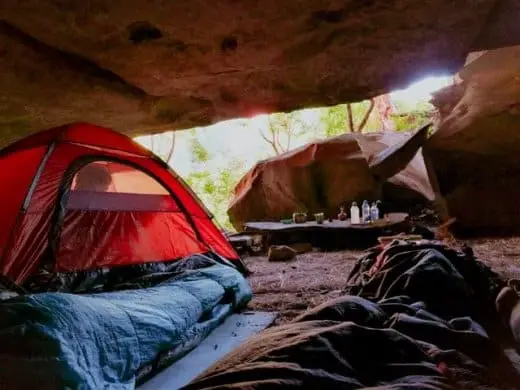
Buying used gear is even better than buying eco-friendly gear or gear made out of recycled materials. When you buy used gear vs. new gear, you are preventing one more piece of equipment from being manufactured.
Another way to save the environment is to use your old camping equipment until it is fully used up. It can be tempting to purchase fancy sheik new equipment.
It is fun to have the most high tech gear at camp. You should, however, hold off on buying new gear if you can. If your old gear works just fine, keep using it. That way, you’re not contributing to the manufacture of new gear and the ecological impacts that come along with it.
Negative Impacts That Camping Can Have on the Environment
When we go camping, we are out there to have fun and connect with nature. Often, we overlook the negative impacts that our presence can have on the local ecosystem. Things like erosion, fire danger, toxic gear, and microplastic pollution often get overlooked.
The Negative Impacts of Erosion
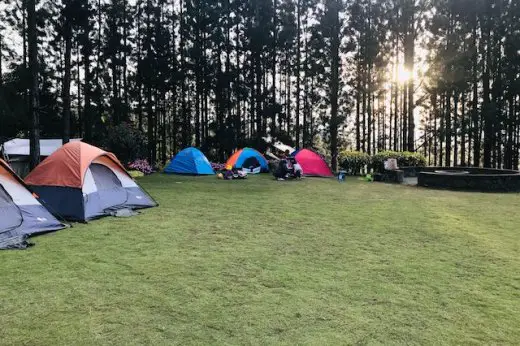
Ecologists say that it only takes ten nights for an improperly placed campsite to cause permanent damage to the surrounding area. In just one camping season, a once beautiful landscape can be permanently altered in a way that will take years of restoration to return to the way it originally was.
Erosion is a really big problem when it comes to camping. A campsite is going to lead to lots of foot traffic in the area, and your tent’s footprint can also cause damage.
You may not consider it, but placing your tent over grass or other vegetation too long will kill it. This may have more severe impacts on the ecosystem than you think. Sure the grass will grow back eventually, but for the time being, you have ruined that habitat for any life that inhabits it. This includes millions, even billions of microscopic organisms that you can’t see.
Foot traffic is also damaging the area with every misplaced step. Any area that gets repeated foot traffic will start to erode and change. Some trails have been built up to withstand foot traffic, but everywhere else is a potential place where your footsteps might cause damage.
Erosion happens quickly and can have larger effects than you might imagine. For example, when walking close to any river or stream, you could be harming the fish that live in the waterway.
When you walk near a waterway, you are damaging the vegetation in the area with every step. As the vegetation wears away, bare ground starts to form. This leads to more runoff into the river or stream and more toxins and pollutants entering the waterway.
These pollutants often feed algae blooms which can have consequences that affect the whole aquatic ecosystem, reducing fish populations and throwing things out of balance.
The Negative Impacts of Campfires
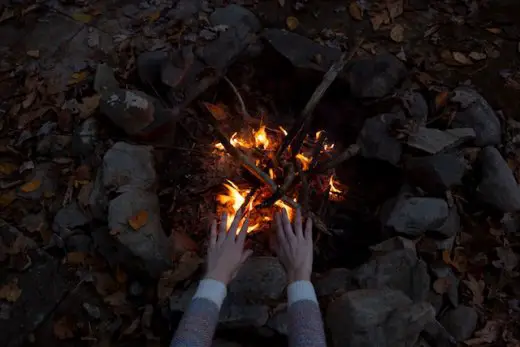
Your campfire is another source of potentially very great environmental damage. Sitting around the campfire is a staple and highlight of most camping trips, but this activity is far from benign.
Campfires are the leading cause of wildfires in North America. Wildfires cause massive amounts of environmental damage. Thousands of acres (even millions in very extreme cases) of forest can go up in smoke. This means countless amounts of wildlife will lose their habitat and likely perish.
The CO2 emissions from wildfires are huge, and many other toxins and chemicals also enter the air when human-made structures are incinerated in the fire. What started simply as fun and games can quickly turn into an ecological disaster that may even take human lives.
Beyond the risk of wildfires, there are other environmental impacts to be aware of. Every campfire that you enjoy is fueled by wood. You may not use much, but you will still be contributing to deforestation.
Many campers are even tempted to remove branches from trees around their campsite. This will damage the local habitat and leave the area more barren for the next campers who hope to enjoy the spot. It should also be mentioned that your campfire is producing CO2 and affecting the air quality around you.
Toxic Chemicals Found in Camping Equipment
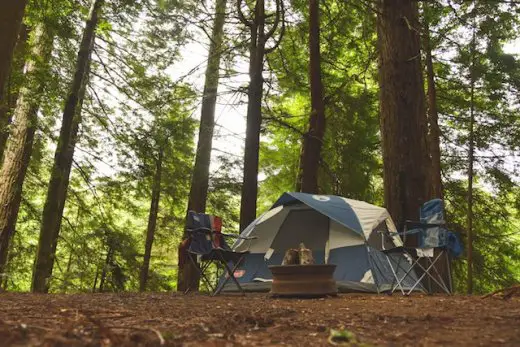
Toxic chemicals can be found in a wide range of camping gear. Any piece of equipment that is treated to be waterproof or moisture-wicking has a high chance of containing toxic chemicals.
The culprits are chemicals called PFCs which include compounds such as perfluorinated carbons, perfluorooctane sulfonate and perfluorooctanoic acid. The problem with these chemicals is that they are very resilient and do not break down easily. Sounds kind of similar to asbestos, huh?
PFCs make wonderful products because of their strong chemical bonds. The fact that they don’t break down, however, makes them hazardous to wildlife and even humans.
PFCs are being found to be bioaccumulative. This means that the body has trouble getting rid of them, and they slowly build up over time and exposure. These chemicals are known to cause reproductive and immune system problems, and they are also known to the state of California as a carcinogen, which means they can potentially cause cancer.
These toxic chemicals are being found all over the world. They are found in remote lakes and areas with low human traffic. Traces of PFCs have even been found accumulating in polar bear’s livers.
How did they get there? It seems that once PFCs are released into the environment, they can become airborne and spread around the planet.
Fire retardant used in tents is another toxicity concern that shouldn’t be overlooked. These fire retardants include chemicals like triphenyl phosphate, trisphosphate, chlorinated tris, and tetrabromobisphenol-A.
These chemicals have been associated with hazardous effects on humans and animals. In studies conducted on lab rats, the rats that were exposed to some of these chemicals developed brain and liver tumors.
These chemicals are known carcinogens and have been linked to adverse effects on the reproductive system. One example is a hormonal disruption in men and a lowered sperm count when exposed to these flame retardants.
It was found that campers are exposed to these chemicals dermally during the process of setting up the tents and then have an even higher exposure through inhalation when sleeping in the tent overnight.
So why are they putting these chemicals in our tents? It all started back in the 1970s when laws were passed requiring flame retardants to be added to a wide range of products.
Back then, they had no idea the harmful effects that these chemicals might have. Why wouldn’t you want everything to be flame retardant? Since then, there have been studies on the harmful effects of fire retardants, and many have been banned. There are still plenty of fire retardants on the market that have been associated with harmful effects, though.
Right now, seven states legally require flame retardants to be used in tents for some odd reason. Currently, the states that require flame retardants to be used in tents are Massachusetts, Minnesota, Michigan, New York, Louisiana, California, and New Jersey. New Jersey also has laws that require sleeping bags to require flame retardants.
Most large companies want their products to be allowed in these states, so they add flame retardants to their tents. These tents then get sold in all states, even the ones that don’t require the flame retardants to be used.
Micro Plastics: The Unseen Consequence of Using Plastic Camping Gear
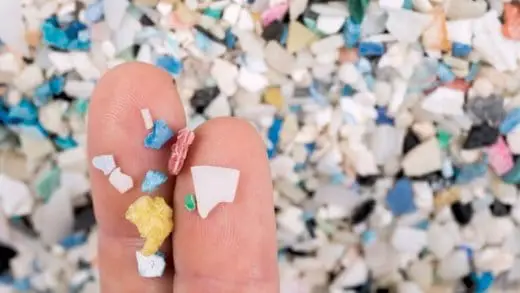
What are microplastics? They are tiny little fibers, beads, or shards of plastic that are too small for the eye to see.
Little microplastic pieces are sometimes manufactured to be used in products such as toothpaste or cosmetics. Microplastics can also be created when plastic breaks down.
Plastic does not biodegrade, but it does break down into smaller and smaller pieces. Every time a plastic item rubs up against something else, there is a chance that microplastics will be broken off and left behind.
Today the majority of camping equipment is made out of synthetic materials, i.e., plastic. Polyester is the most common one, but nylon, acrylic, polyfin, polyurethane, and many other types of synthetic plastic are used.
These materials make fantastic products. Synthetic materials allow for gear to be lightweight, dry quickly, pack easily, and stand up to conditions in ways that non-synthetic materials can’t. Unfortunately, there is an environmental dark side to these synthetic plastics.
Your washing machine and dryer are two of the biggest culprits when it comes to creating microplastic pollution.
Every time you wash your synthetic material clothing, your washing machine spins them around and agitates them, making a perfect environment for the creation of microplastics.
These microplastics get knocked off of your clothes and into the water in your washing machine. The microplastics then get drained from your washing machine into the water supply, where they eventually end up in the ocean or maybe even in your drinking water.
The dryer also generates lots of microplastics. Because of the heat and the rough tumbling, it can create even more.
Some of the microplastics will be caught in your lint screen, but some will get blown right out the vent and into your outside atmosphere. That’s your breathing air, and you’re filling it with plastic! The microplastics are then picked up by the wind and could be carried anywhere in the world.
This article is owned by Recapture Nature and was first published on February 22, 2020
When you’re camping, you are bringing plastic gear out into the natural environment and exposing it to the possibility of direct microplastic pollution. When you wear hiking shoes or boots with rubber soles, every step could be rubbing off microplastics onto the trail. Strong winds could be knocking them off of your tent.
So what is the harm of microplastics? As of right now, the biggest identified negative effects of microplastics are the harms that it is causing to marine life.
Microplastics are everywhere right now. We are finding them up in the mountains and in remote locations where there has never even been any plastic litter. The place where most microplastics will eventually end up is in the ocean. They may float around on land for a while, but they will likely end up in a river or stream eventually and then be carried out to sea.
This is having devastating effects on marine ecosystems. Smaller marine animals at the bottom of the food chain are mistaking microplastics for food and eating them. Eating microplastics can sometimes kill these small organisms leading to less food for other marine biology higher up on the food chain. Fish are also eating these small organisms that have eaten plastic. This is throwing off marine food chain stability, and some of these microplastics filled fish are even ending up on your dinner plate.
The Environmental Impacts of Manufacturing Camping Equipment
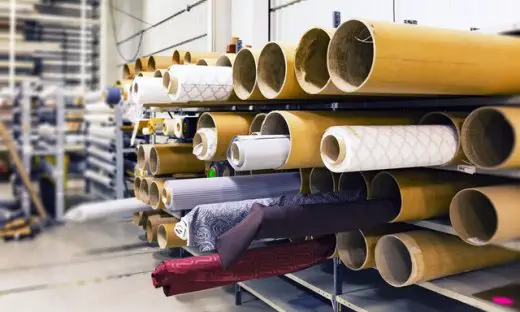
Many of us think about littering and the effects that sending the stuff that we buy to the dump will have. These effects are apparent and in our face. When we are finished with a piece of equipment, we send it to the landfill.
It’s something we see first hand.
However, there is a whole other side of each product’s life cycle that we do not get to see directly. That is the side of manufacturing and distributing the product. Everything that happened before you went to the store to buy it.
Often, a product’s manufacturing will have more of an environmental impact than the actual product does in use. Manufacturing often includes the use of large amounts of fuel or electricity and creates the byproducts of CO2 emission as well as the emissions of other contaminants into the atmosphere.
With the rise in awareness of global climate change and the adverse environmental effects of doing business, regulation of manufacturing is getting better and preventing the worst of environmental offenses. This is not enough, however. Many companies get around these regulations by manufacturing in countries like China or India with less strict laws.
Because of this, the environmentally-conscious consumer needs to do their research when buying new camping equipment. Does the company you are buying from care about the environment, and what are their environmental practices like?
Sources
Outside Online: Your Campsite is Destroying Nature
Rei: Leave No Trace 5 Ways Your Campsite May Be Impacting the Environment
Paddling: Getting to Know Outdoor Fabrics
Ocean Conservancy: What Does Your Washing Machine Have to Do With Microfibers
Get Green Now: How Do Microplastics Affect the Environment?
This article is owned by Recapture Nature and was first published on February 22, 2020
Outdoor Project: The Challenge for the Ethical Outdoor Consumer
Take Part: Your Sleeping Bag Could Be Toxic
The Guardian: Toxic Chemicals Found in Most Outdoor Gear
Gear Junkie: Camping Tents Toxic? Duke Study Reveals Troubling Chemical Exposure
Alter Net: Tent Camping in America is One Big Toxic Experience
This article is owned by Recapture Nature and was first published on February 22, 2020

